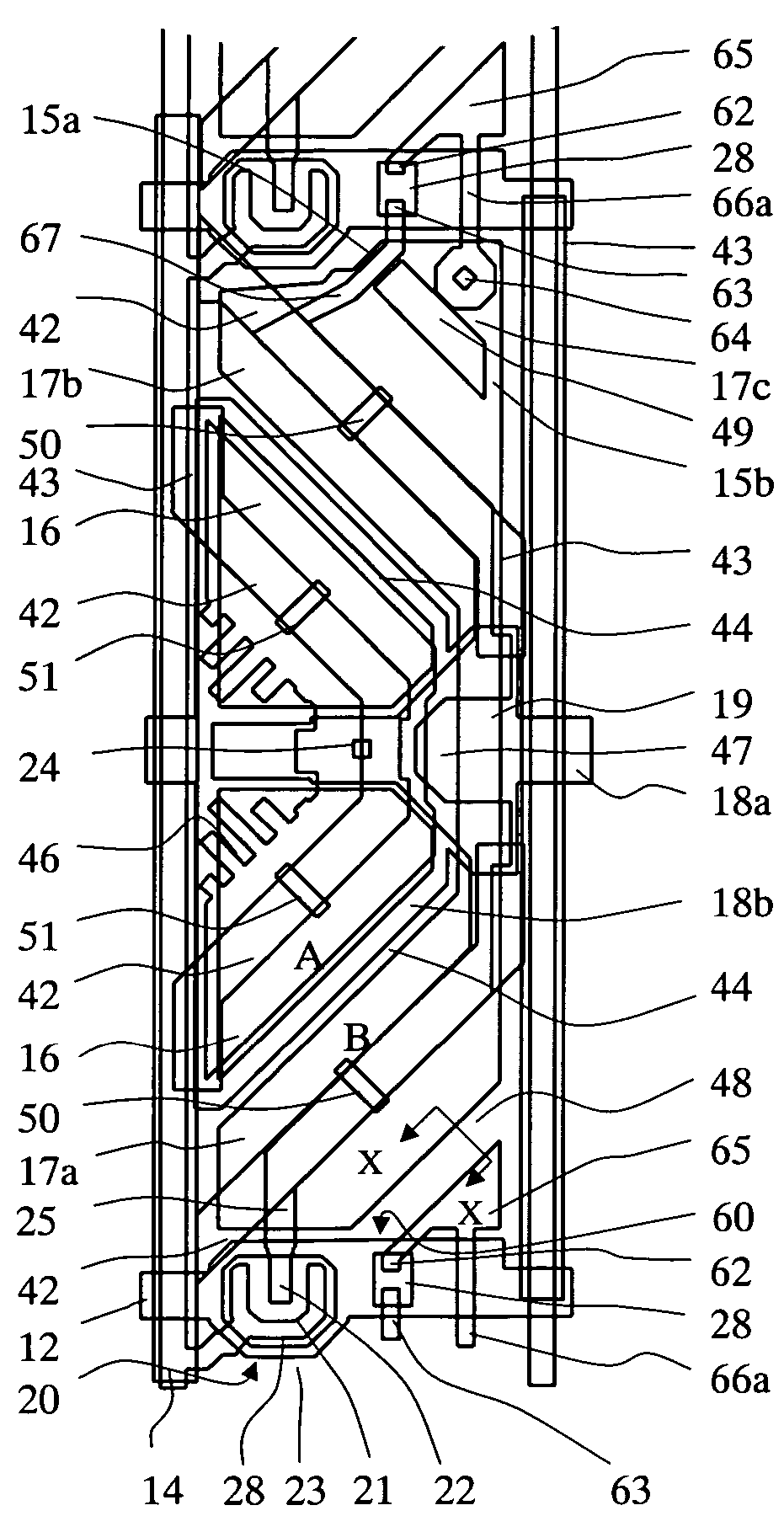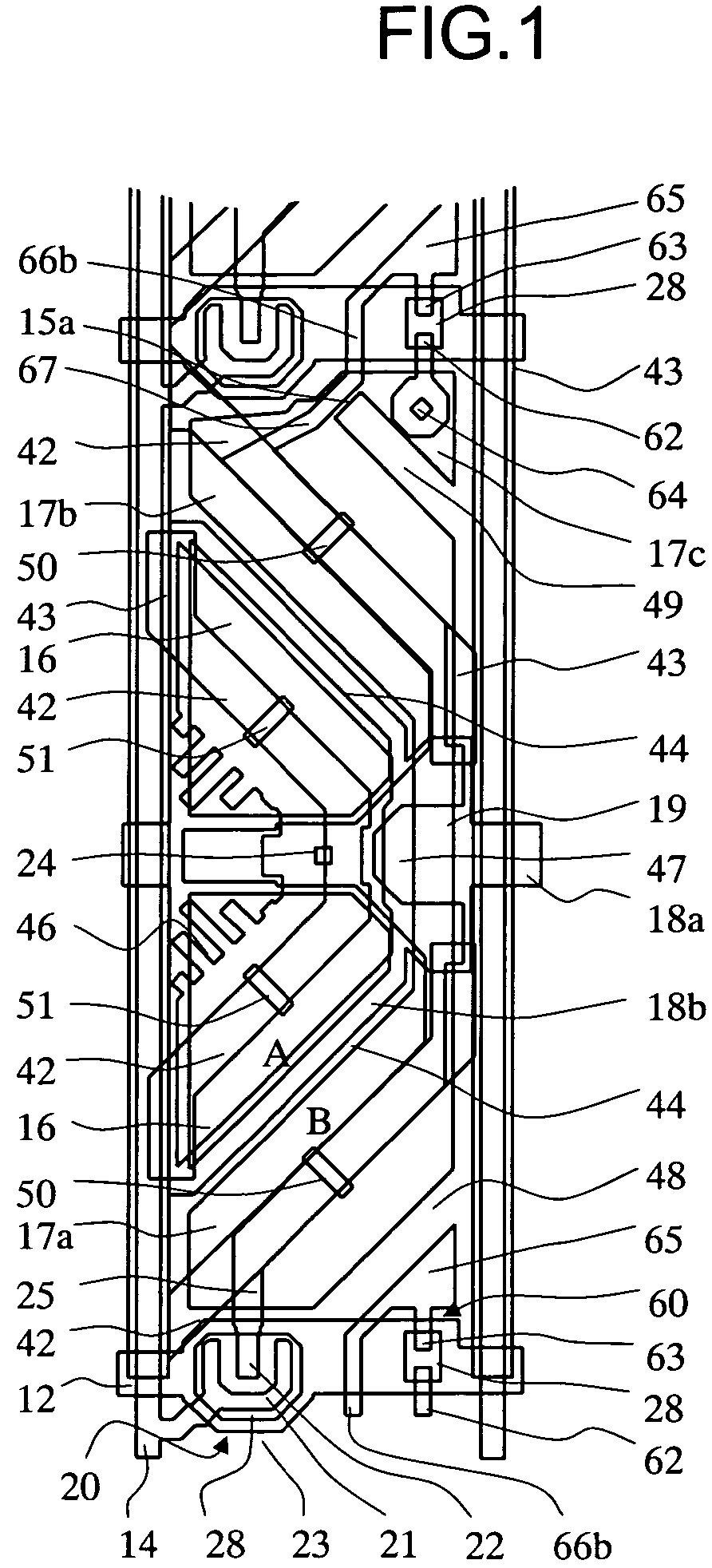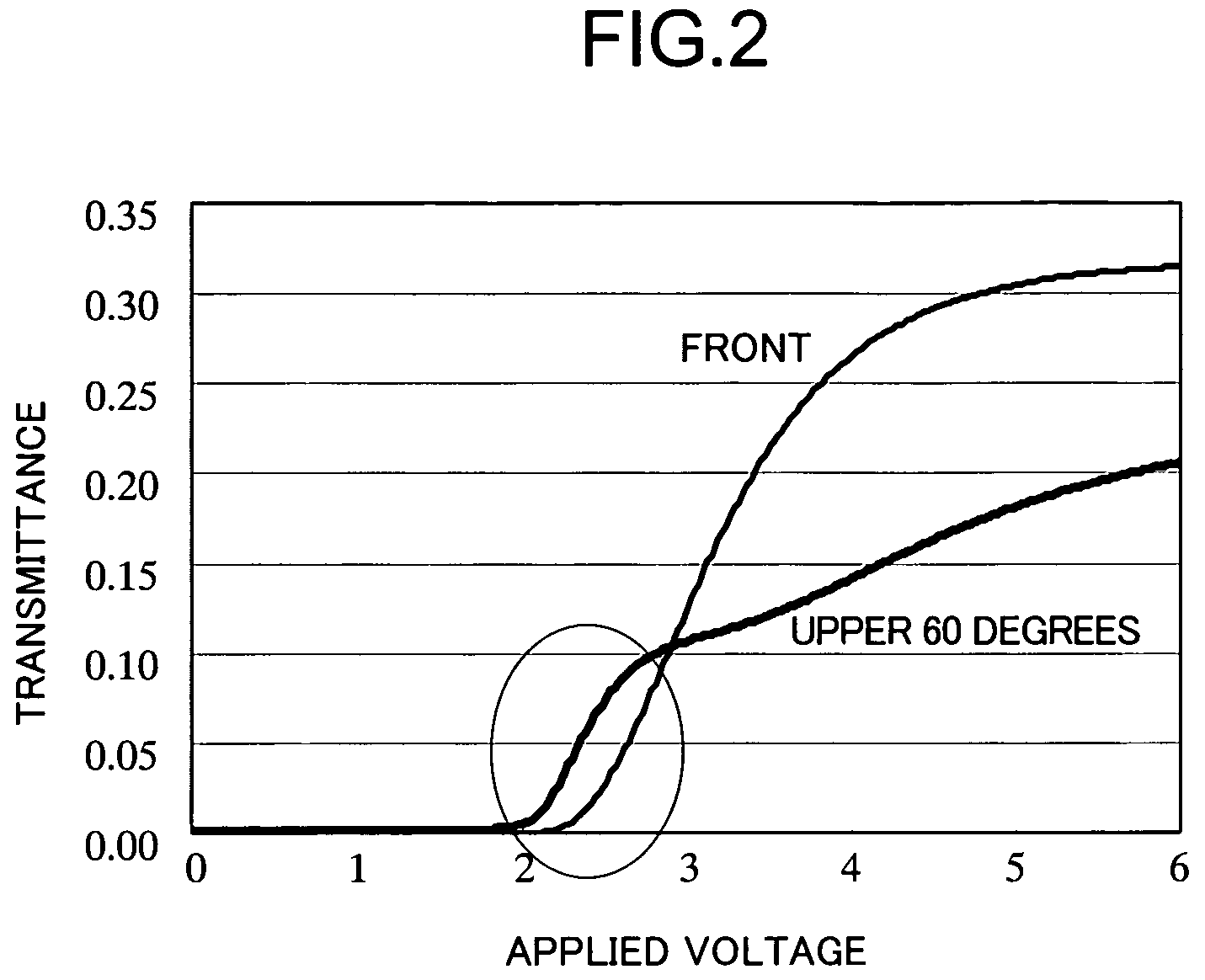Liquid crystal display device
a display device and liquid crystal technology, applied in non-linear optics, instruments, optics, etc., can solve problems such as the inability to propagate the tilt direction, and achieve the effect of improving the alignment and improving the display quality
- Summary
- Abstract
- Description
- Claims
- Application Information
AI Technical Summary
Benefits of technology
Problems solved by technology
Method used
Image
Examples
first embodiment
[0036]A liquid crystal display device according to a first embodiment of the invention will be described with reference to FIGS. 4, 5 and 7. FIG. 4 shows the rough structure of the liquid crystal display device of this embodiment. As shown in FIG. 4, the liquid crystal display device includes a TFT substrate 2 having a gate bus line 12 and a drain bus line 14 formed to intersect with each other through an insulating film, a TFT formed for each pixel and a pixel electrode. Besides, the liquid crystal display device includes an opposite substrate 4 which is disposed to be opposite to the TFT substrate 2 and on which a CF and a common electrode are formed, and a liquid crystal 6 (not shown in FIG. 4) sealed between both the substrates 2 and 4 and having, for example, a negative dielectric anisotropy. Vertical alignment films (not shown) to cause the liquid crystal 6 to be vertically aligned are formed on interfaces between the liquid crystal 6 and the TFT substrate 2 and between the li...
second embodiment
[0053]Next, a liquid crystal display device of a second embodiment of the invention will be described with reference to FIG. 6. FIG. 6 shows a structure of one pixel and part of upper and lower pixels adjacent thereto in the liquid crystal display device of this embodiment. As shown in FIG. 6, in this embodiment, differently from the first embodiment (see FIG. 4), a re-extension part 66b of an extension part 67 of a control capacitance electrode 25 strides across a gate bus line 12, and is electrically connected to an alignment control electrode 65 of an adjacent pixel. The alignment control electrode 65 is electrically connected to a drain electrode 63 of a second TFT 60. On the other hand, a contact hole 64 is electrically connected to a source electrode 62 of the second TFT 60.
[0054]At the instance when the gate bus line 12 to drive the second TFT 60 comes to have an OFF voltage, potentials of both sub-pixels A and B are decreased by a capacitance between each of the sub-pixels A...
third embodiment
[0056]Next, a liquid crystal display device of a third embodiment of the invention will be described with reference to FIGS. 8 and 9. In this embodiment, differently from the first and the second embodiments, a portion 15b to connect a pixel electrode 17b and a pixel electrode 17c is eliminated, and a slit 49 has such a shape that one side is opened. FIG. 8 is a view in which the vicinity of the slit 49 of FIG. 6 is enlarged and a dark line generated in the vicinity of the slit 49 is schematically shown. FIG. 9 is a view in which the vicinity of the slit 49 of FIG. 1 is enlarged and a dark line generated in the vicinity of the slit 49 is schematically shown. In the pixel electrode shape in which a connection portion 15b shown in FIG. 8 exists, dark lines 71a and 71b undulate and enter the inside of the pixel electrode 16, and a dark region is also generated. However, when there is no connection portion 15b as shown in FIG. 9, shapes of dark lines 71a and 71b become simple shapes alo...
PUM
| Property | Measurement | Unit |
|---|---|---|
| widths | aaaaa | aaaaa |
| angle | aaaaa | aaaaa |
| width | aaaaa | aaaaa |
Abstract
Description
Claims
Application Information
 Login to View More
Login to View More - R&D
- Intellectual Property
- Life Sciences
- Materials
- Tech Scout
- Unparalleled Data Quality
- Higher Quality Content
- 60% Fewer Hallucinations
Browse by: Latest US Patents, China's latest patents, Technical Efficacy Thesaurus, Application Domain, Technology Topic, Popular Technical Reports.
© 2025 PatSnap. All rights reserved.Legal|Privacy policy|Modern Slavery Act Transparency Statement|Sitemap|About US| Contact US: help@patsnap.com



